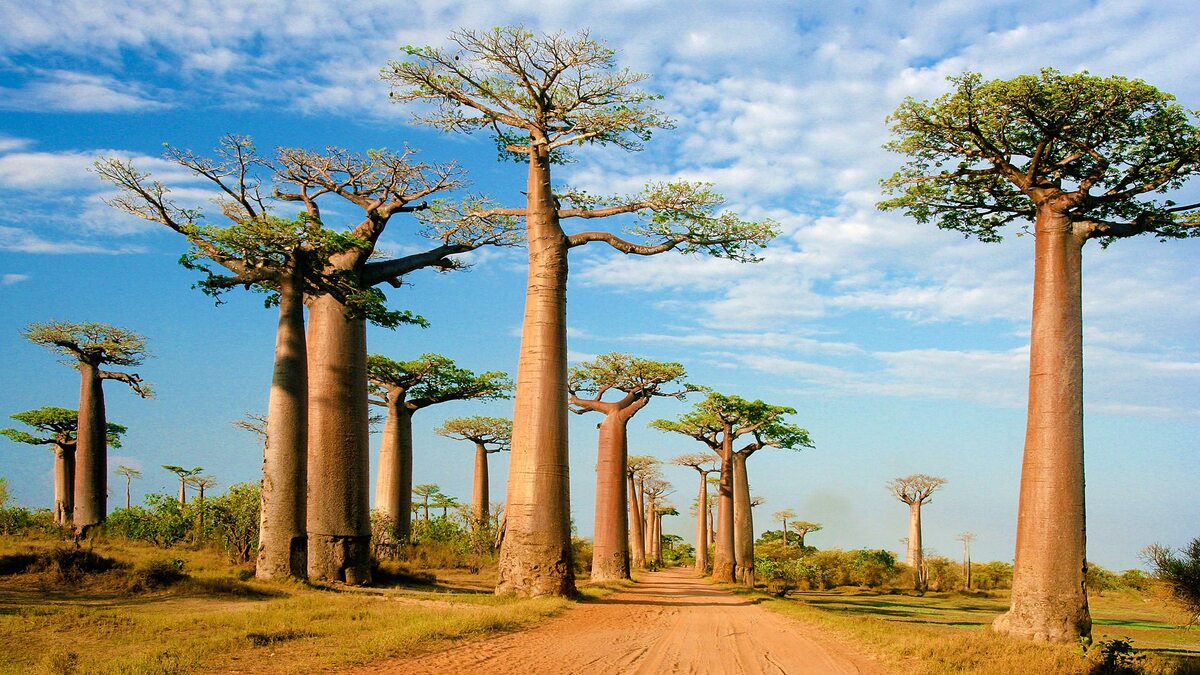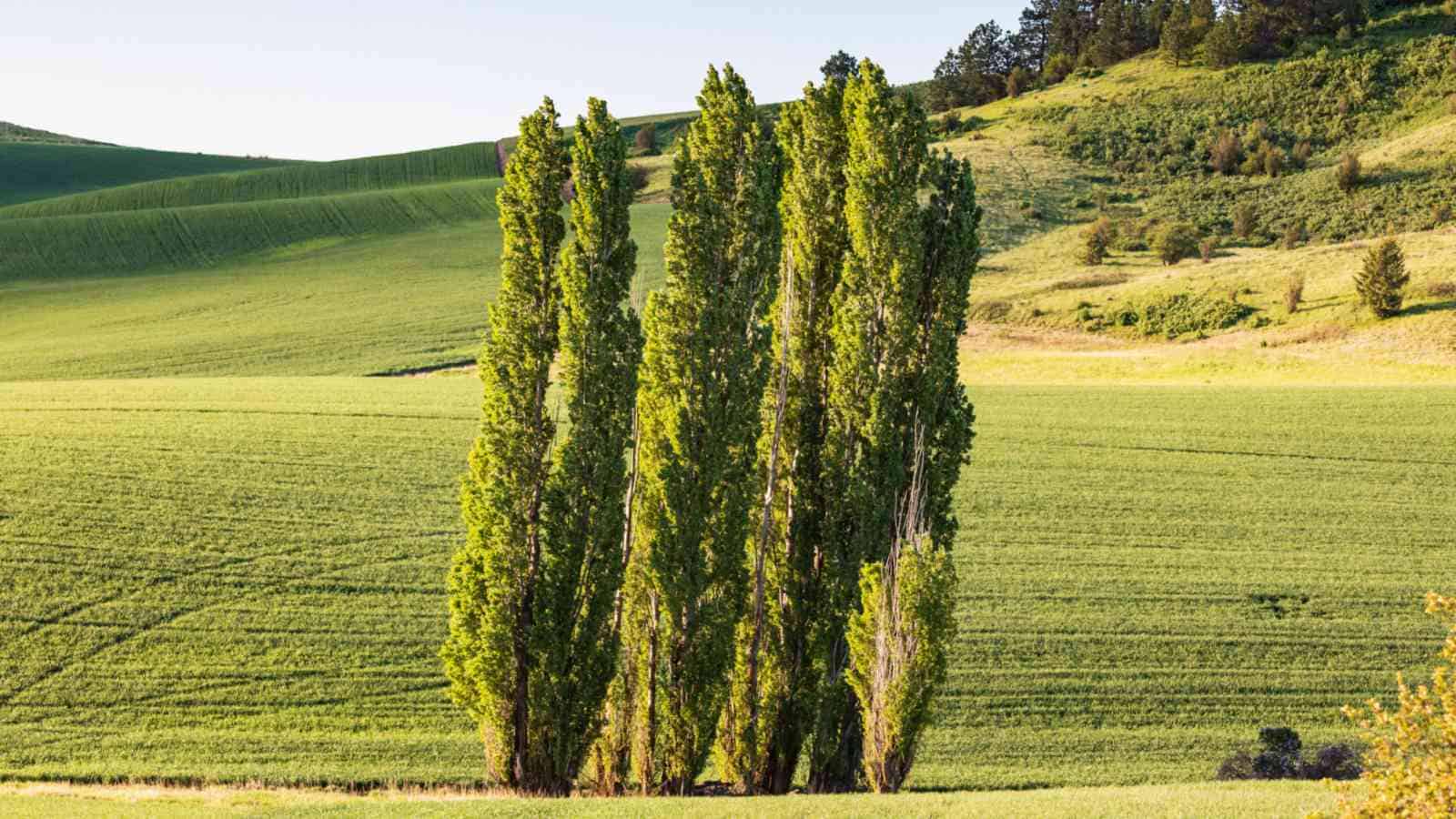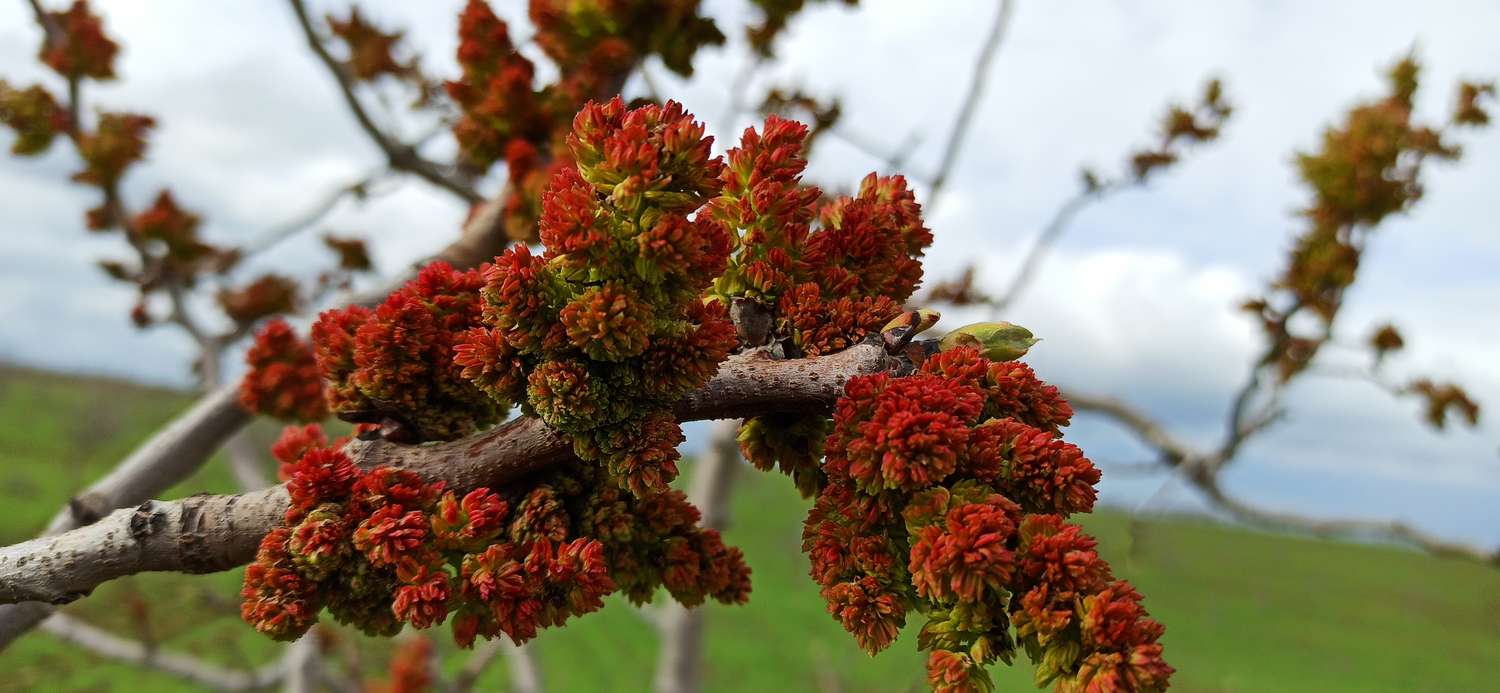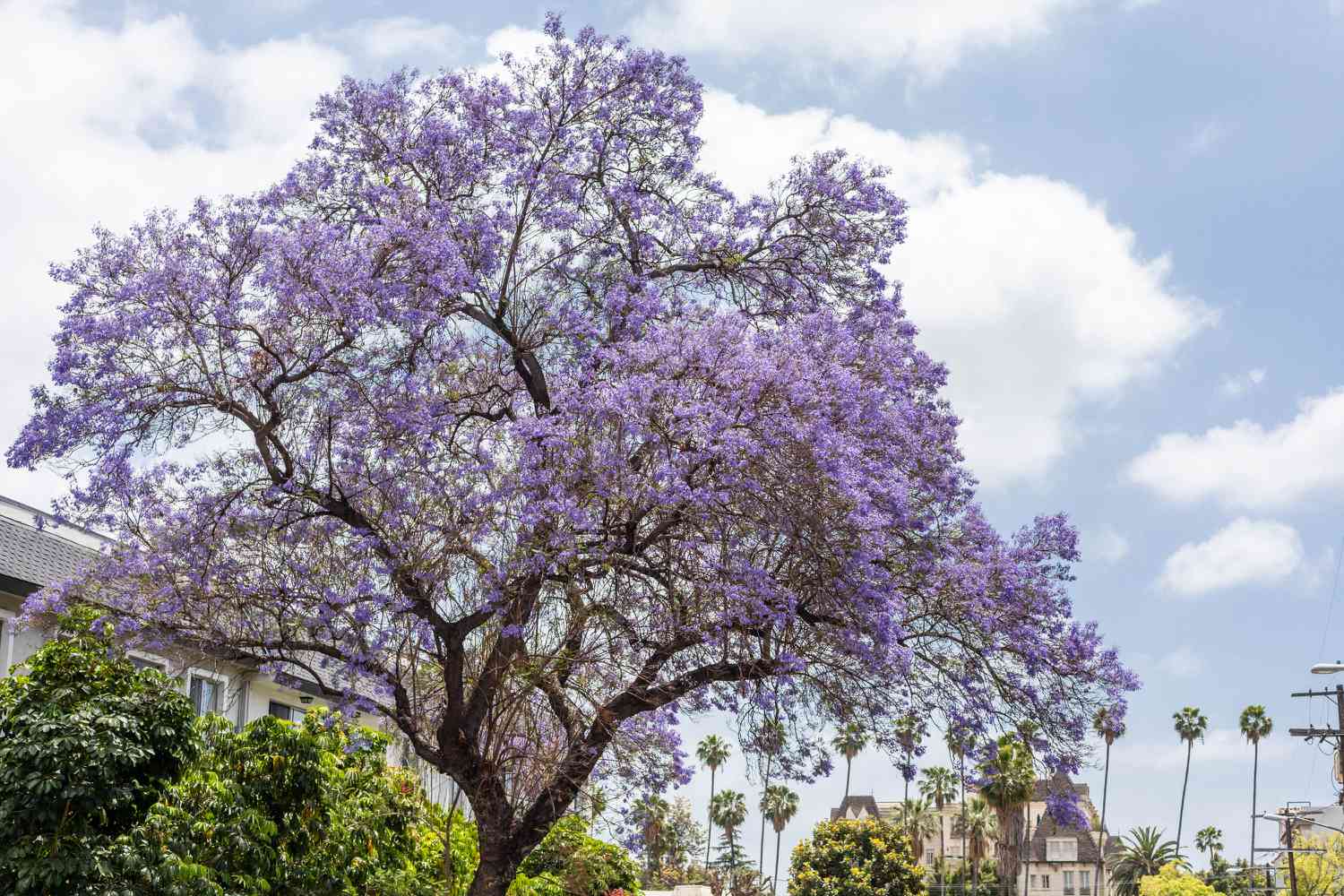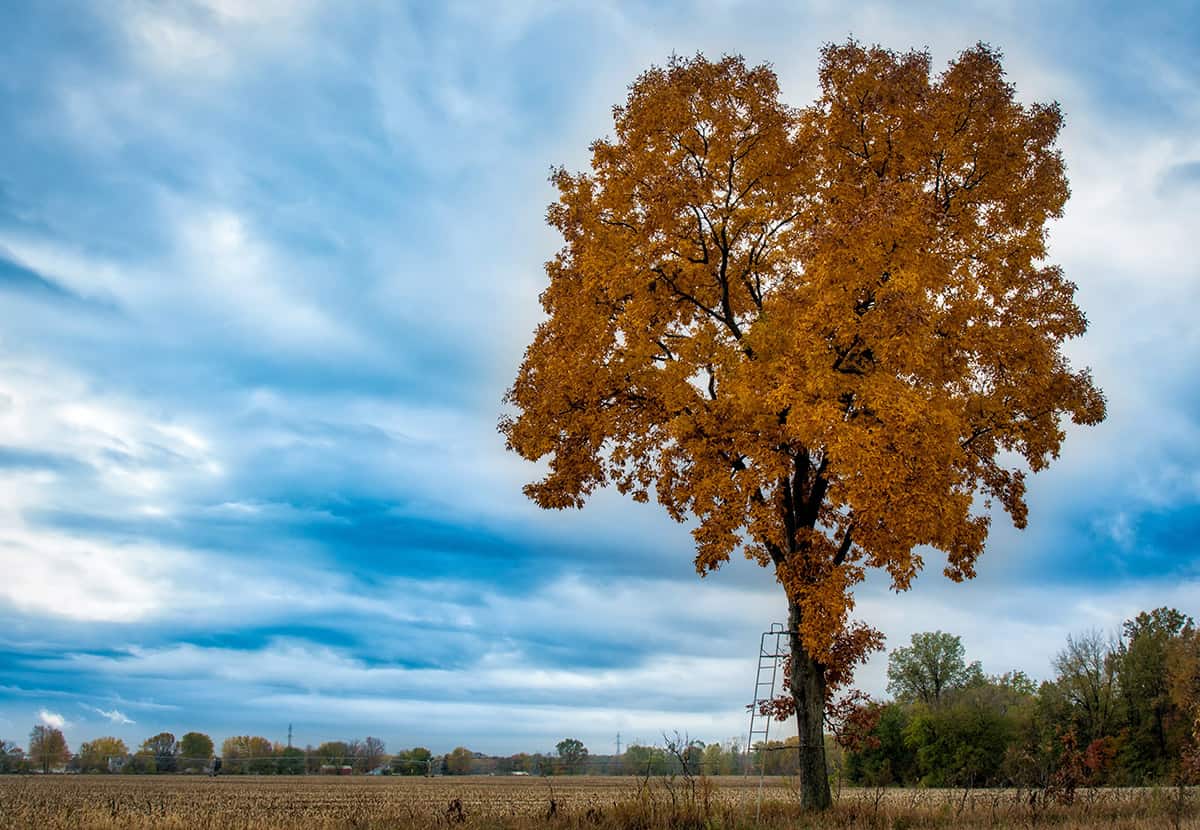Home>Types of Gardening>Edible Gardening>What Trees Do Coconuts Grow On


Edible Gardening
What Trees Do Coconuts Grow On
Modified: February 7, 2024
Discover the joy of edible gardening and learn about the trees that bear delicious coconuts. Start growing your own coconut trees today!
(Many of the links in this article redirect to a specific reviewed product. Your purchase of these products through affiliate links helps to generate commission for Chicagolandgardening.com, at no extra cost. Learn more)
Table of Contents
Introduction
Welcome to the wonderful world of edible gardening! If you’re interested in growing your own food at home, starting an edible garden is a fantastic way to do so. Not only can it provide you with fresh and nutritious produce, but it’s also a rewarding and fulfilling experience to watch your plants thrive and harvest the fruits of your labor.
One popular aspect of edible gardening is growing an array of delicious fruits. And when it comes to fruit trees, few can rival the iconic and versatile coconut tree. Coconuts are not only renowned for their distinct flavor and texture but also for the numerous health benefits they offer.
But have you ever wondered what trees coconuts actually grow on? In this article, we’ll delve into the fascinating world of coconut trees, exploring their types, characteristics, cultivation, uses, and more. So, grab a refreshing coconut water and get ready to embark on a journey into the realm of these magnificent tropical trees.
Whether you reside in a tropical paradise or are simply looking to add a taste of the tropics to your backyard, growing coconut trees can be an exciting and rewarding venture. From their lush green fronds to their towering height, coconut trees have a unique allure that can transform any landscape into a tropical oasis.
However, growing coconut trees is not limited to equatorial regions alone. With the right conditions and proper care, these remarkable trees can flourish in a variety of climates and regions around the world. Even if you don’t have access to a sprawling plantation, a single coconut tree can still add a touch of exotic beauty to your garden.
So, whether you’re craving fresh coconuts for culinary delights or seeking a picturesque addition to your garden, join us as we explore the enchanting journey of the coconut tree – from its humble beginnings to its widespread uses and nutritional benefits. Let’s dive in and discover the wonders that coconut trees have to offer!
Types of Trees that Coconuts Grow On
Contrary to popular belief, coconuts do not actually grow on trees called “coconut trees.” Instead, they grow on a specific type of palm tree known as the Cocos nucifera. This palm tree belongs to the family Arecaceae and is commonly referred to as the coconut palm.
The coconut palm is a tall and slender tree that can reach heights of up to 80 feet (24 meters). It has a straight, smooth trunk with a crown of large, feathery fronds at the top. These fronds, also known as leaves, can grow up to 20 feet (6 meters) in length and have a characteristic arching shape.
Coconut palms are typically found in tropical and subtropical regions, thriving in sandy coastal areas with high humidity and plenty of rainfall. They are native to the tropics of Southeast Asia but have been cultivated in many other parts of the world, including the Caribbean, South America, Africa, and the Pacific Islands.
Within the species Cocos nucifera, there are several different varieties of coconut palms. These varieties can differ in terms of their growth habits, resistance to diseases, and the characteristics of their fruit.
The most common variety is the tall coconut palm, also known as the “Typica” variety. This variety has a straight trunk and a long lifespan, with some trees living for over a hundred years. They produce coconuts that are prized for their sweet, flavorful water and delicious flesh.
Another variety is the dwarf coconut palm, which is smaller in stature, reaching heights of only 20 to 40 feet (6 to 12 meters). Dwarf palms typically have a more compact canopy and are known for their precocity, meaning they start producing fruit at a younger age compared to tall palms.
Other unique varieties include the red coconut palm, which has a reddish tint on its fronds and can produce red-tinted coconuts, and the golden coconut palm, which produces coconuts with a golden hue.
While the various coconut palm varieties may differ slightly in appearance and fruit characteristics, they all share the same impressive ability to produce the beloved and versatile coconut. From tall palms to dwarf varieties, each type of tree contributes to the bounty of coconuts enjoyed by people all around the globe.
Characteristics of Coconut Tree
The coconut tree, scientifically known as Cocos nucifera, is a remarkable plant with a plethora of unique characteristics that make it highly adapted to its tropical environment. Here are some of the key features of the coconut tree:
Tall and Stately: The coconut tree is known for its impressive height, reaching up to 80 feet (24 meters) in the case of tall varieties. Its straight trunk, which can grow up to 2 feet (60 centimeters) in diameter, provides stability to support the weight of its crown of leaves and coconuts.
Feathery Fronds: At the top of the coconut tree, you’ll find a crown of large, feather-shaped fronds. These fronds can grow up to 20 feet (6 meters) in length and are known for their iconic arching shape. They provide shade and protection for the tree, as well as aid in the process of photosynthesis.
Deep Root System: The coconut tree possesses an extensive and fibrous root system that helps anchor it securely into the ground. These roots have the remarkable ability to absorb both surface-level and subterranean water, allowing coconut trees to withstand harsh coastal conditions and droughts.
Floral Beauty: While coconut trees are primarily known for their coconuts, they also produce striking flowers. These flowers, called inflorescences, grow at the base of the fronds and develop into clusters known as spadices. Each spadix can contain hundreds of individual flowers that are pollinated by insects and bats.
Multiple Trunks: In some instances, coconut trees can have multiple trunks arising from a single root system. This phenomenon, known as clustering, occurs naturally in certain varieties and can create a visually captivating effect as multiple trunks twist and intertwine with one another.
Adaptive Abilities: Coconut trees have evolved unique adaptations that allow them to thrive in coastal areas. For instance, their leaves are flexible and aerodynamically shaped, enabling them to withstand strong winds and tropical storms common in their natural habitat.
Longevity: Coconut trees have an impressive lifespan, often living for several decades. Some tall varieties have been known to live well over a hundred years, providing a reliable source of coconuts and contributing to the natural beauty of their surroundings.
These distinctive characteristics make the coconut tree not only a symbol of tropical paradise but also a fascinating plant with remarkable adaptability and resilience. Whether it’s the towering height, graceful fronds, or delicious coconuts, each aspect of the coconut tree adds to its allure and makes it an essential component of tropical landscapes worldwide.
Life Cycle of a Coconut Tree
The life cycle of a coconut tree is a captivating journey that spans several years and showcases the tree’s ability to produce coconuts year after year. Let’s take a closer look at the various stages of a coconut tree’s life cycle:
Germination: The life cycle of a coconut tree begins with germination. It starts when a mature coconut falls from the tree and lands on the ground. Over time, the outer husk of the coconut begins to decompose, exposing the inner shell.
Root Development: With the inner shell partially exposed, a root begins to emerge from one of the coconut’s eyes, or germination pores. This root starts growing downwards into the soil, anchoring the coconut in place and absorbing water and nutrients.
Seedling Stage: As the root continues to grow, a shoot emerges from the top of the coconut. This shoot eventually becomes the trunk of the coconut tree. At this stage, the coconut is considered a seedling, with small, heart-shaped leaves developing on top of the shoot.
Vegetative Growth: Over time, the seedling develops into a mature coconut tree. The trunk elongates, and more leaves begin to grow, forming the characteristic crown of fronds at the top of the tree. The tree dedicates energy to vegetative growth, focusing on developing a strong and sturdy structure.
Flowering: Once the coconut tree reaches a certain age and size, it will start producing flowers. These flowers, arranged in clusters called spadices, are pollinated by insects or bats. The tree’s inflorescences can bear both male and female flowers, allowing for self-pollination or cross-pollination with the help of pollinators.
Fruit Development: After successful pollination, the coconut tree’s flowers develop into coconuts. The coconuts initially appear as green, oblong fruits. As they mature, the outer husk turns from green to brown and hardens, while the inner shell remains intact, protecting the inner seed or endosperm.
Harvesting: Coconuts are typically harvested when they are fully mature. The exact timing of the harvest depends on the purpose for which the coconuts are intended. Some coconuts are harvested for their water when the husk is still green, while others are left to ripen and develop the familiar white flesh.
Continued Growth and Reproduction: Even after harvesting, the coconut tree continues to grow and produce coconuts year after year. As the tree matures, it can produce a larger number of coconuts per year, ensuring a steady supply of this versatile fruit.
The life cycle of a coconut tree is a testament to its resilience and long-term productivity. From germination to fruit development, each stage plays a crucial role in the tree’s growth and ability to produce the beloved coconuts that provide nourishment and enjoyment to people worldwide.
Cultivation and Harvesting of Coconuts
Cultivating and harvesting coconuts requires specific knowledge and techniques to ensure successful growth and optimal yields. Here are the key steps involved in the cultivation and harvesting of coconuts:
Selection of Planting Material: Coconut cultivation begins with choosing high-quality planting material. Healthy and mature coconuts with intact husks are selected for planting. The husk is soaked in water for a few days to allow the coconut to germinate before it is planted.
Preparation of Planting Site: Coconut trees thrive in well-draining sandy or loamy soil. The planting site should be cleared of debris and leveled to ensure proper water drainage. The soil may also require enrichment with organic matter or fertilizers to provide essential nutrients.
Planting the Coconuts: Coconuts are planted at a depth of around half their length, with the pointed end facing upward. Planting is typically done during the rainy season when there is plenty of moisture to promote root development. Spacing between coconut trees is determined by their variety and growth characteristics.
Watering and Irrigation: During the initial stages of growth, coconut trees require regular watering to establish a healthy root system. Adequate irrigation is crucial, especially in the absence of sufficient rainfall or in dry regions. Drip irrigation or sprinkler systems are commonly used for efficient water distribution.
Pruning and Maintenance: Regular pruning is necessary to remove dead or damaged fronds, promote airflow, and prevent the spread of diseases. As the coconut tree matures, it may require additional support, such as propping or bracing, to counteract the weight of the coconuts and prevent the trunk from bending or breaking.
Pest and Disease Management: Coconut trees are susceptible to various pests and diseases, including scale insects, mites, and fungal infections. Implementing integrated pest management practices, such as regular inspection, proper sanitation, and the use of biopesticides, can help control and mitigate these issues.
Harvesting: Coconuts are typically harvested when they are fully mature. Depending on the intended purpose, harvesting can occur at different stages. For coconut water, green coconuts are harvested before the flesh fully develops. For mature coconuts, the husk turns brown and hardens, indicating readiness for harvest. Harvesting is performed by climbing the tree or using long poles or tools.
Post-Harvest Processing: After harvesting, the coconuts are processed to obtain the desired products. The husk is removed, and the hard shell is opened to extract the water and flesh. The coconut water can be consumed as a refreshing beverage, while the flesh can be grated, dried, or pressed for various culinary uses.
Successful coconut cultivation and harvesting require careful attention to the specific needs of the trees throughout their lifecycle. From selecting high-quality planting material to employing proper maintenance and harvesting techniques, each step contributes to the successful growth and production of coconuts, ensuring a bountiful harvest that can be enjoyed in numerous ways.
Uses of Coconuts
Coconuts are one of nature’s most versatile and useful fruits. From culinary delights to skincare products, coconuts have a wide range of uses that make them highly valued around the world. Let’s explore some of the key uses of coconuts:
Culinary Purposes: Coconuts are a staple ingredient in many cuisines, particularly in tropical regions. The flesh of the coconut can be grated, shredded, or pressed to extract coconut milk and cream, which are commonly used in curries, desserts, smoothies, and baked goods. The water inside the coconut can be consumed as a refreshing beverage or used as a base for juices and cocktails.
Cooking Oil: Coconut oil is derived from the meat of the coconut and is widely used in cooking and baking. Known for its distinct flavor and high smoke point, coconut oil is a popular choice for sautéing, frying, and stir-frying. It is also used as a replacement for traditional oils in vegan and gluten-free recipes.
Beauty and Skincare: The natural properties of coconuts make them excellent for skincare and haircare. Coconut oil is praised for its moisturizing and nourishing qualities, making it a popular ingredient in lotions, creams, lip balms, and hair products. Coconut milk is used in moisturizing masks and hair treatments, helping to hydrate and revive the skin and hair.
Fiber and Textiles: The husk of the coconut, known as coir, can be processed to extract strong and durable fibers. These fibers are used to make various products such as ropes, mats, brushes, and even furniture stuffing. Coir is known for its resistance to moisture, making it ideal for outdoor and garden applications.
Construction and Building Materials: The sturdy trunk and versatile palm leaves of coconut trees have been used for centuries in construction. The timber from the trunk is used to make furniture, flooring, and even boat structures. The leaves, known as fronds, are woven together to create roofs, walls, and other structural components in traditional architecture.
Biofuel: Coconuts can also be used as a source of biofuel. The oil extracted from coconuts can be converted into biodiesel, a renewable and environmentally friendly alternative to fossil fuels. This makes coconut oil an attractive option for sustainable energy production.
Health and Wellness: Coconuts offer various health benefits. The water from young green coconuts is not only refreshing but also rich in electrolytes and minerals, making it a natural sports drink. The flesh of the coconut is high in healthy fats, fiber, and essential nutrients, promoting a healthy immune system and aiding digestion.
These are just a few of the countless uses of coconuts, showcasing their versatility and value across different industries. Whether you enjoy the culinary delights they offer, incorporate them into your beauty regimen, or utilize their fibers for practical applications, coconuts have something to offer everyone.
Nutritional Benefits of Coconuts
Coconuts are not only delicious but also packed with various essential nutrients that offer numerous health benefits. These tropical fruits provide a unique combination of macronutrients and micronutrients that contribute to overall well-being. Let’s explore some of the key nutritional benefits of coconuts:
Healthy Fats: Coconuts are rich in healthy fats, primarily in the form of medium-chain triglycerides (MCTs). MCTs are easily digested and quickly metabolized by the body, providing a readily available source of energy. These fats are known to increase satiety, promote weight loss, and improve cognitive function.
Fiber: Coconuts are a good source of dietary fiber, particularly in the flesh. Fiber is essential for maintaining a healthy digestive system and regulating bowel movements. It helps prevent constipation, promotes gut health, and may even aid in weight management by promoting a feeling of fullness.
Vitamins and Minerals: Coconuts contain a range of vitamins and minerals that contribute to overall health. They are particularly rich in manganese, which plays a crucial role in bone health, metabolism, and antioxidant defense. Coconuts also provide small amounts of potassium, magnesium, iron, and vitamins C and E.
Antioxidants: Coconuts contain antioxidants, including phenolic compounds and vitamin C, which help protect the body against oxidative stress and cellular damage caused by free radicals. These antioxidants contribute to a healthy immune system, reduce inflammation, and may have anti-aging effects.
Electrolytes: The water inside coconuts is a natural source of electrolytes, including potassium, sodium, and magnesium. Electrolytes are essential for maintaining proper hydration, regulating fluid balance, and supporting nerve and muscle function. Coconut water is often used as a natural rehydration beverage.
Cholesterol and Blood Sugar Management: Despite being high in saturated fats, coconuts have been shown to have a positive impact on cholesterol levels. The MCTs found in coconuts have been found to increase HDL (good) cholesterol and improve the LDL (bad) to HDL cholesterol ratio. Additionally, coconuts may help regulate blood sugar levels, making them a suitable option for those with diabetes or prediabetes.
Boosted Brain Health: The MCTs in coconuts have been linked to improved brain health and cognitive function. These fats are easily converted into ketones, which serve as an alternative energy source for the brain. This can be beneficial for individuals with neurological disorders or age-related cognitive decline.
With their unique nutritional profile, coconuts offer a wide range of health benefits. Whether it’s providing energy, supporting digestion, boosting immunity, or promoting heart health, incorporating coconuts into your diet can contribute to a well-rounded and nourishing lifestyle.
Coconut Industry and Trade
The coconut industry plays a significant role in the global economy, with the trade of coconuts and coconut products contributing to employment, income generation, and economic development in many countries. Let’s explore the importance and dynamics of the coconut industry:
Production and Export: Coconuts are grown in over 90 countries, with the majority of production concentrated in tropical regions such as Southeast Asia, India, and the Pacific Islands. These regions have favorable climatic conditions, abundant rainfall, and suitable soil for coconut cultivation. The leading producers of coconuts are Indonesia, the Philippines, and India. Coconuts and coconut products are then exported to various countries worldwide.
Diversified Products: The coconut industry offers a wide range of products, including fresh coconuts, coconut water, coconut milk, coconut oil, and coconut-based food and beverages. These products are used both domestically and internationally for culinary purposes, industrial applications, and in the beauty and skincare industry.
Employment and Income: The coconut industry provides employment opportunities for millions of people, especially in rural areas. Coconut cultivation, harvesting, and processing require manual labor, providing income and livelihoods for farmers, laborers, and small-scale enterprises. In some regions, the coconut industry serves as a primary source of income and economic stability.
Trade and Export Value: The global trade of coconuts and coconut products has experienced steady growth in recent years. Coconut exports contribute to the trade balance of producing countries and generate foreign exchange earnings. Coconut oil, in particular, is one of the most traded coconut products globally, followed by coconut water, desiccated coconut, and coconut milk.
Sustainable Practices: The coconut industry has made strides towards adopting sustainable practices and supporting environmentally friendly production. This includes organic cultivation, fair trade initiatives, and certifications for sustainable sourcing. These efforts aim to minimize environmental impact and promote social welfare within the industry.
Challenges and Opportunities: The coconut industry faces various challenges, including climate change, pests and diseases, market fluctuations, and competition from alternative products. However, there are also opportunities for growth and innovation. Developing new coconut-based products, expanding market access, and investing in research and development can help strengthen the industry and create new avenues for trade.
Local and Cultural Importance: In many coconut-growing regions, coconuts hold cultural and traditional significance. They are used in religious rituals, traditional ceremonies, and culinary customs. Coconuts are deeply embedded in the cultural fabric of these communities, and their cultivation and trade play a crucial role in preserving local traditions and heritage.
The coconut industry and trade have far-reaching implications, impacting economies, livelihoods, and sustainability efforts. From providing employment opportunities to contributing to international trade and fostering cultural heritage, coconuts serve as a valuable commodity with a significant global presence.
Environmental Impact of Coconut Cultivation
While coconut cultivation offers numerous economic and social benefits, it is crucial to consider its potential environmental impact. The production and processing of coconuts can have both positive and negative effects on the environment. Let’s explore some key aspects of the environmental impact of coconut cultivation:
Biodiversity Preservation: Coconut cultivation, when integrated with other crops or agroforestry systems, can contribute to biodiversity conservation. Coconut plantations can provide habitat for various flora and fauna, including birds, insects, and small mammals. However, the use of large-scale monoculture coconut plantations may result in the loss of native vegetation and biodiversity.
Water Use and Management: Coconut trees require substantial amounts of water for proper growth and development. In areas where water resources are limited, irrigation practices for coconut cultivation must be carefully managed to prevent excessive water usage or depletion of water sources. Sustainable water management techniques, such as drip irrigation or rainwater harvesting, can help minimize the environmental impact.
Soil Erosion and Land Degradation: Unsustainable land management practices, such as excessive pesticide and fertilizer use or illegal deforestation for coconut plantations, can lead to soil erosion and land degradation. This can negatively impact soil quality, reduce biodiversity, and contribute to water pollution. Implementing sustainable agriculture practices, including soil conservation methods and organic farming techniques, can help mitigate these issues.
Chemical Usage and Pollution: The use of pesticides and fertilizers in coconut cultivation can have detrimental effects on the environment if not properly managed. Chemical runoff from coconut plantations can pollute nearby water bodies, impacting aquatic ecosystems and potentially harming other plants and wildlife. Implementing integrated pest management practices and promoting organic farming methods can reduce the reliance on potentially harmful chemicals.
Climate Change Mitigation: Coconut trees have the potential to contribute to carbon sequestration and climate change mitigation efforts. The extensive root systems of coconut trees can help stabilize soil and prevent erosion. Additionally, the long lifespan of coconut trees allows for the sequestration of carbon dioxide from the atmosphere. Supporting sustainable farming practices and protecting existing coconut forests are essential in maximizing the carbon sequestration potential of coconut cultivation.
Sustainable Farming Practices: To minimize the environmental impact of coconut cultivation, adopting sustainable farming practices is crucial. These practices include organic farming methods, integrated pest management, water conservation, and soil erosion prevention techniques. By minimizing chemical use, optimizing water usage, and preserving soil health, the negative environmental consequences of coconut cultivation can be mitigated.
Community Engagement and Education: Engaging local communities in sustainable coconut farming practices and providing educational programs on environmental conservation can play a significant role in preserving natural resources. This can include promoting responsible land management, biodiversity conservation, and fostering awareness of the importance of ecological balance within coconut-growing regions.
By promoting sustainable coconut cultivation practices, embracing biodiversity conservation efforts, and educating stakeholders, it is possible to mitigate the potential environmental impact of coconut cultivation and ensure a sustainable future for both the industry and the environment.
Conclusion
The world of edible gardening is made even more captivating with the inclusion of coconut trees. These iconic tropical trees offer an abundance of benefits, from their delicious fruit to their versatile uses. Understanding the various aspects of coconut trees, from the types they grow on to their life cycle and cultivation, provides a deeper appreciation for these remarkable plants.
Coconut trees not only provide us with nourishment but also play a significant role in the global economy. The coconut industry and trade drive employment, income generation, and economic development in many regions. From the production and export of coconuts and coconut products to the utilization of coconut fibers in various industries, the significance of coconuts cannot be overstated.
While enjoying the numerous benefits of coconuts, it is essential to consider their environmental impact. Sustainable farming practices, including biodiversity conservation, responsible water management, and soil erosion prevention, are critical in ensuring that coconut cultivation remains environmentally compatible and promotes long-term sustainability.
The nutritional benefits of coconuts are undeniable. From their healthy fats and fiber content to their vitamins, minerals, and antioxidant properties, coconuts offer a nourishing addition to our diets. Incorporating coconuts into our culinary endeavors as well as our skincare routines provides a natural source of wellness and beauty enhancement.
As we delve into the fascinating realm of edible gardening and explore the wonders of coconut trees, it is essential to recognize the intertwined relationship between humans and nature. By embracing sustainable practices, supporting local communities, and preserving the environment, we can ensure the continued existence and prosperity of coconut cultivation while enjoying the unique delights that coconuts provide.

